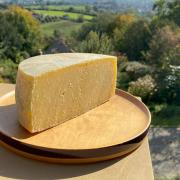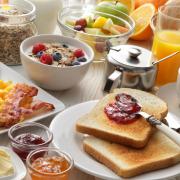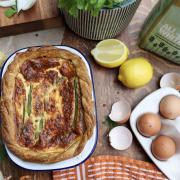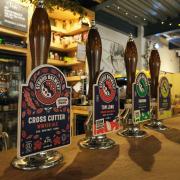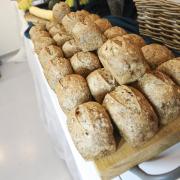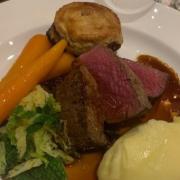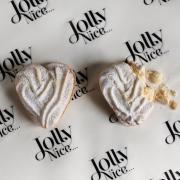At first glance, you might not think the King and French chef Raymond Blanc have much in common.
They’re from different countries and have very different professions, but one major thing unites them: a love of kitchen gardens.
Blanc, 74, has an impressive kitchen garden at the hotel-restaurant he is chef-patron of – Le Manoir aux Quat’Saisons in Oxfordshire – while Charles is also known to be a keen gardener, tending to plants grown across the royal estates.
That’s exactly what Blanc is taking a look at in his latest ITV series, Raymond Blanc’s Royal Kitchen Gardens.
The chef and author has travelled across the UK, visiting five of the most incredible kitchen gardens in the nation – at the Castle of Mey and Dumfries House in Scotland, Hillsborough Castle in Northern Ireland, and Highgrove House and Hampton Court Palace in England.
This gave him a look at Charles’ passion for sustainability in action – meeting the knowledgeable gardeners and experts who work on the royal estates.
As this is Blanc – a man who has two Michelin stars under his belt – there’s also a lot of cooking involved. Using either produce from the gardens or taking inspiration from what he experienced there, the chef demonstrates some fresh and tasty dishes on the show including a quick-cook ratatouille, baked peaches and the French dish poule au pot – chicken in a pot.
Ahead of his latest show launching, we sat down with Blanc to hear about his experience going behind the scenes at the royal estates.

What made you want to cover Royal Kitchen Gardens?
First, it was not my decision. I wanted to, but obviously it was the decision of the King, because they’re his gardens – and thank God he allowed us to film in these beautiful walled gardens.
For me who loves gardens, who loves history, I was able to discover [so much]. I already knew Highgrove and I definitely knew Hampton Court well enough, but I didn’t know about Hillsborough Castle, I didn’t know about Dumfries, I had no idea about the Castle of Mey. I discovered some little gems – you would walk somewhere and suddenly you would see a space with so much serenity, so much beauty.
I remember the first castle I visited was the Castle of Mey. I started to get to know the history and I was really touched by it, even before seeing this castle, and when I saw it, everything came alive, everything became very emotional.
It was rebuilt by the late Queen mum. It is this castle close to the sea and it was a beautiful day – we were so lucky not to get winds. There was cattle, Aberdeen Angus – hundreds slowly grazing. It was a perfect picture of quietness, stillness, serenity and beauty.
What did you learn about the King?
Charles would often come on holiday to the Castle of Mey. Maybe I completely misread [things], maybe I’m getting too sentimental, as I often do – but I felt like Charles absorbed so much of this stillness, of that quietness, from the nature, from the sea. It’s close to the farmers next door and that community was very rural. I believe that maybe a lot of his views have been shaped by his experiences. I definitely felt that and it was beautiful.
I already knew about his devotion for all things we love – about sustainability, about management of waste, management of energy, no waste, about where the world is going, how can we create a better world through sustainability. I knew that he made it as a deed – he didn’t just say it, he created his Prince’s Trust which now works across the continents – not just England, all over. That charity will grow and it is a marvellous deed to help communities.
What were the gardens like?
The Castle of Mey had an extraordinary garden, which I didn’t expect – because how can you grow a garden about 200 yards from the sea? When there’s a gale it can blow spray about 50 metres high and the wall was only four metres. Salt kills everything – but somehow, the wall was enough so it killed the slugs but not the vegetables.
That was a lovely place to be and I saw these wonderful peaches. I couldn’t help nicking one away – I had to test. I must say, to grow peaches right in the nose and tip of Scotland is quite the challenge, even if you have a greenhouse, and those peaches were magnificent. I had to be careful because the prince was there two days after, so I couldn’t eat them all – I would have finished in the Tower of London! I would have been the first ever – did you know that no Frenchman has been in the Tower of London? I couldn’t believe it.
What were the gardeners you met like?
Those gardens – I was about to say they’re almost as lovely as mine. Let’s just say mine are almost as good as the King’s – you don’t want to be better, do you? But they are magnificent.
I talked to all the gardeners, we actually grow quite a number of the same variety of vegetables. So we talked about soil problems, acidity – we talked shop, basically. We talked food and we talked growing.
I know, too well, to be a chef, many years ago, you had to have had a lobotomy. You had to be a social outcast – but not any more. Our industry has become the most beautiful industry in the world. And so it is for gardeners – gardeners have been undermined too much and for too long. And their knowledge! The knowledge they have is incredible – and too often their knowledge has been undermined. It’s about time we better look after our amazing gardeners.
What kind of dishes did you cook on the show?
I did a bit of a posh dessert for the Queen mum, which was a pineapple sunflower – because pineapple was the thing to grow [back in her day]. Anybody who was anybody would grow a pineapple because the pineapple was viewed as a symbol of success, of money, of exoticism. So I did pineapple for the Queen mum.
You [make] flowers of pineapple, then parfait, and if you want, a few cherries at the bottom. That was the poshest dish because, after all, it was for a royal.
Raymond Blanc’s Royal Kitchen Gardens airs on ITV1 and is also available to watch on ITVX












